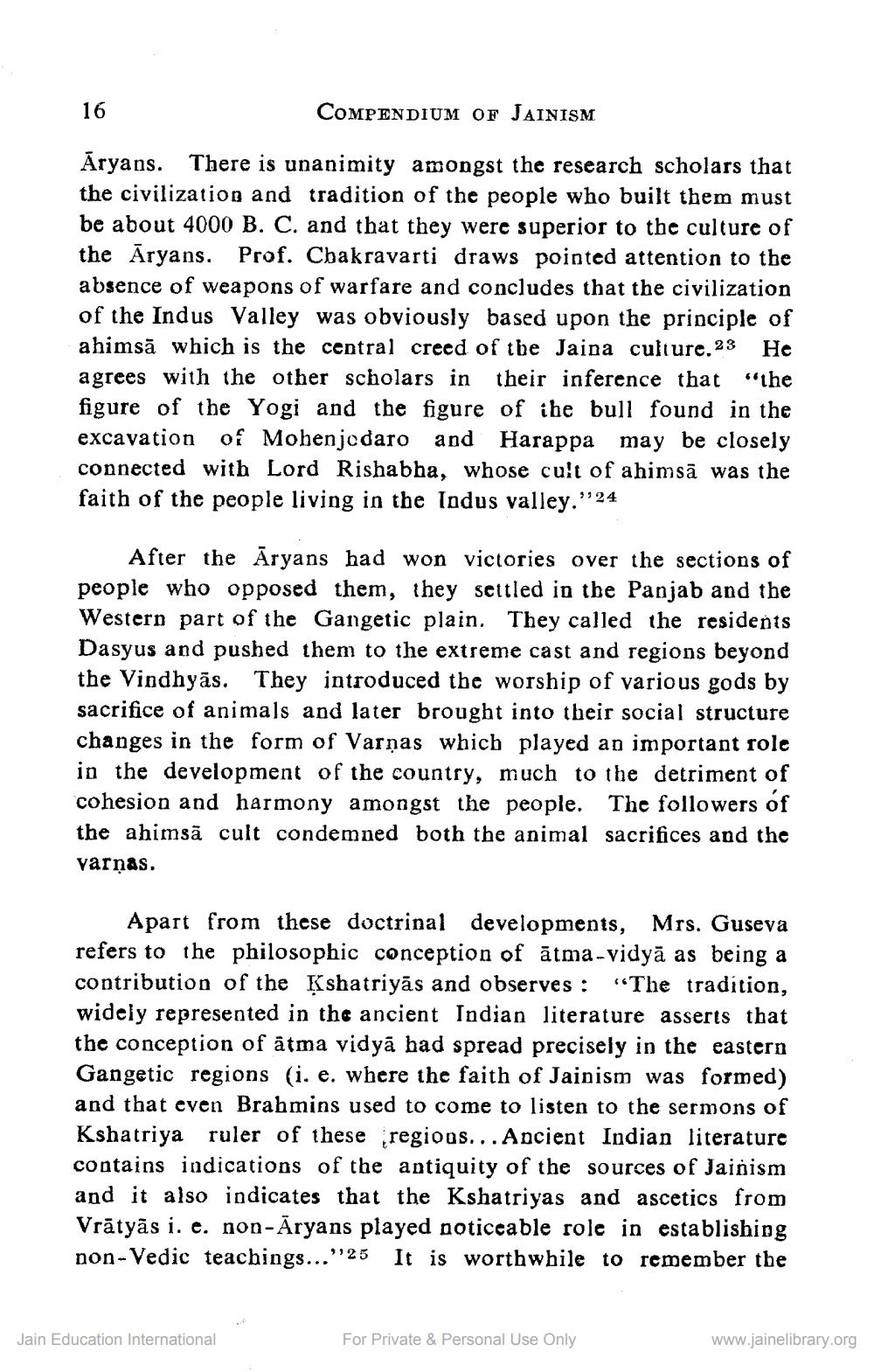________________
COMPENDIUM OF JAINISM
Āryans. There is unanimity amongst the research scholars that the civilization and tradition of the people who built them must be about 4000 B. C. and that they were superior to the culture of the Aryans. Prof. Chakravarti draws pointed attention to the absence of weapons of warfare and concludes that the civilization of the Indus Valley was obviously based upon the principle of ahimsa which is the central creed of the Jaina culture. 23 He agrees with the other scholars in their inference that "the figure of the Yogi and the figure of the bull found in the excavation of Mohenjodaro and Harappa may be closely connected with Lord Rishabha, whose cult of ahimsa was the faith of the people living in the Indus valley."24
16
After the Aryans had won victories over the sections of people who opposed them, they settled in the Panjab and the Western part of the Gangetic plain. They called the residents Dasyus and pushed them to the extreme cast and regions beyond the Vindhyās. They introduced the worship of various gods by sacrifice of animals and later brought into their social structure changes in the form of Varņas which played an important role in the development of the country, much to the detriment of cohesion and harmony amongst the people. The followers of the ahimsa cult condemned both the animal sacrifices and the varnas.
Apart from these doctrinal developments, Mrs. Guseva refers to the philosophic conception of atma-vidya as being a contribution of the Kshatriyās and observes : "The tradition, widely represented in the ancient Indian literature asserts that the conception of atma vidya had spread precisely in the eastern Gangetic regions (i. e. where the faith of Jainism was formed) and that even Brahmins used to come to listen to the sermons of Kshatriya ruler of these regions... Ancient Indian literature contains indications of the antiquity of the sources of Jainism and it also indicates that the Kshatriyas and ascetics from Vratyās i. e. non-Aryans played noticeable role in establishing non-Vedic teachings..."25 It is worthwhile to remember the
Jain Education International
For Private & Personal Use Only
www.jainelibrary.org




